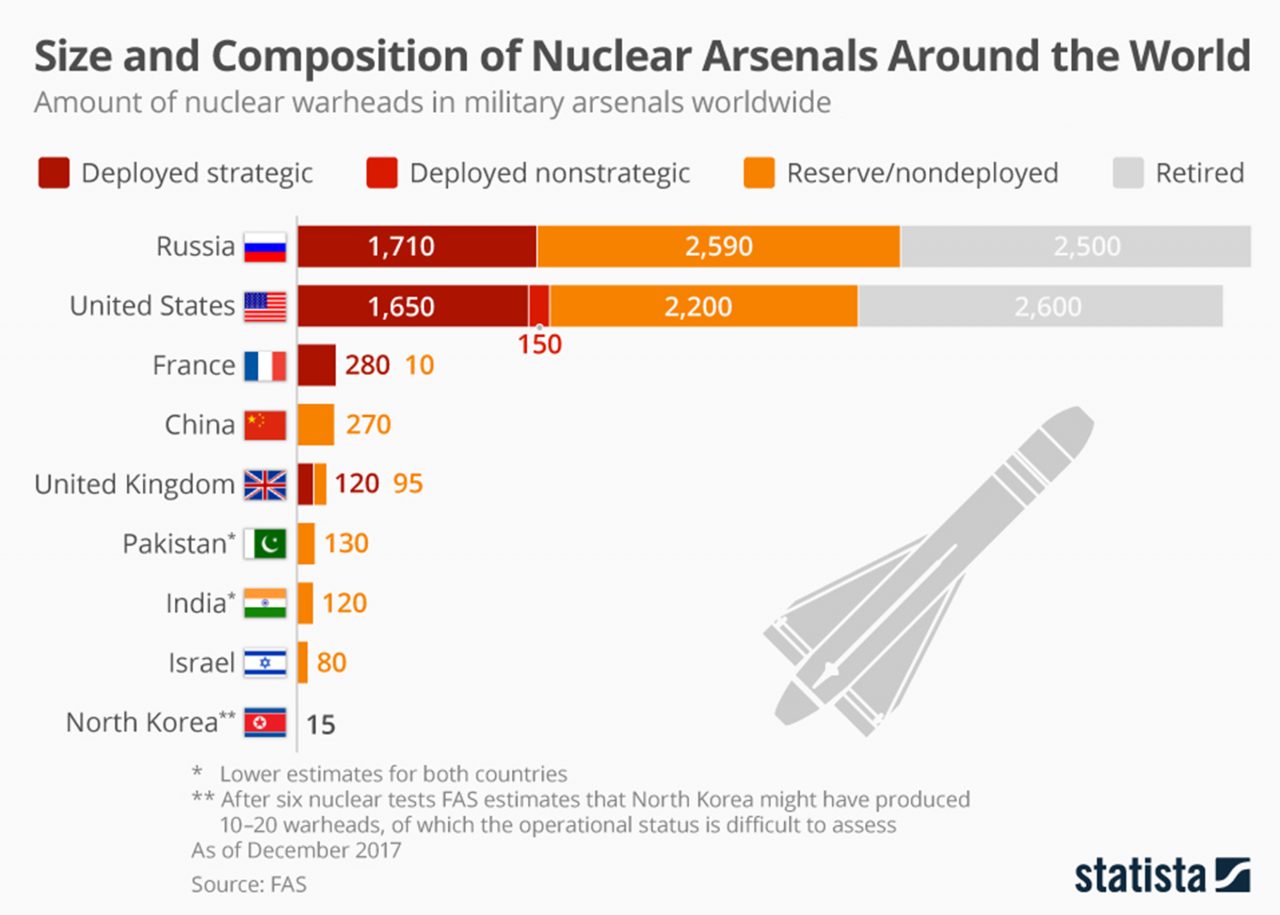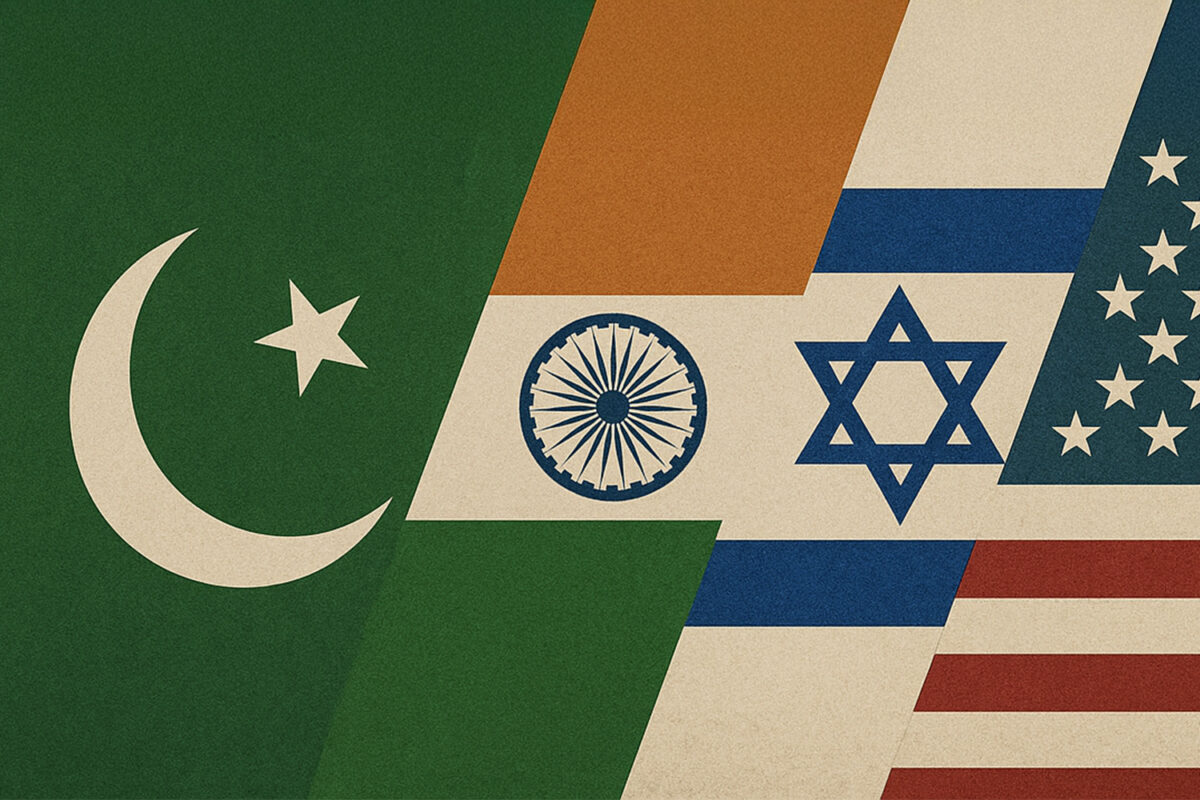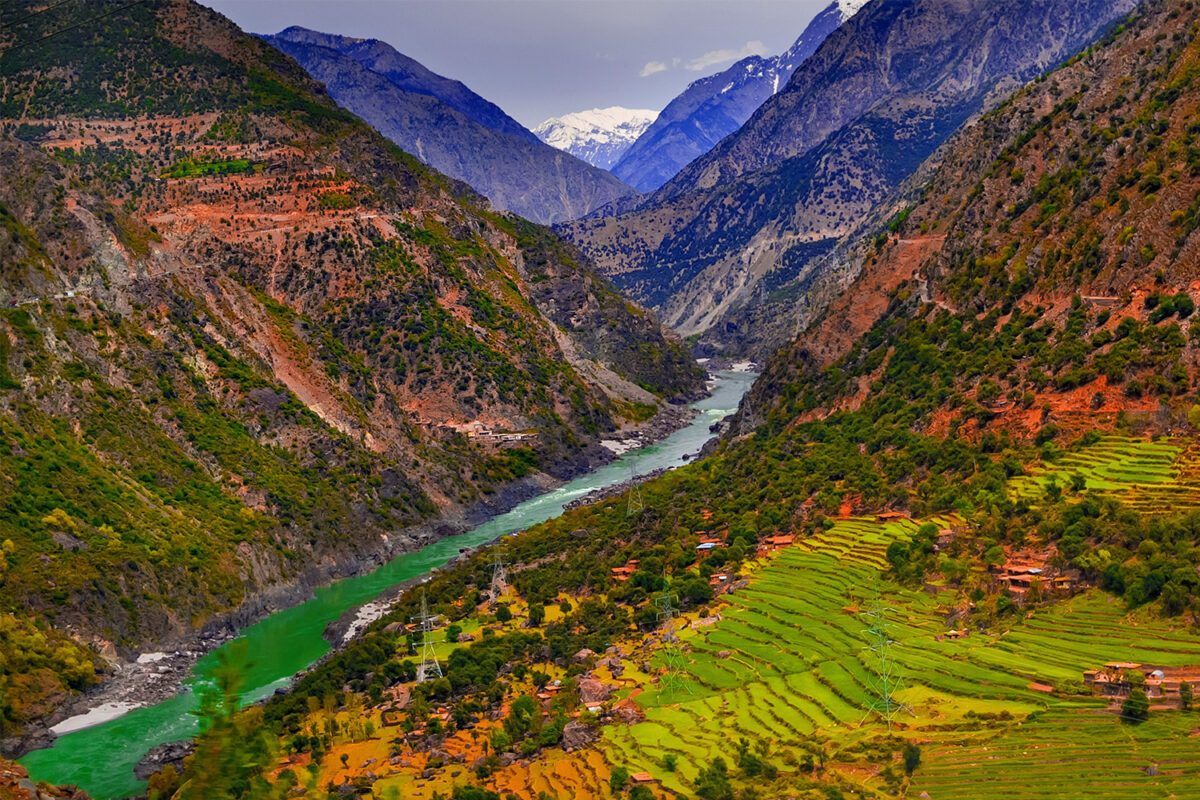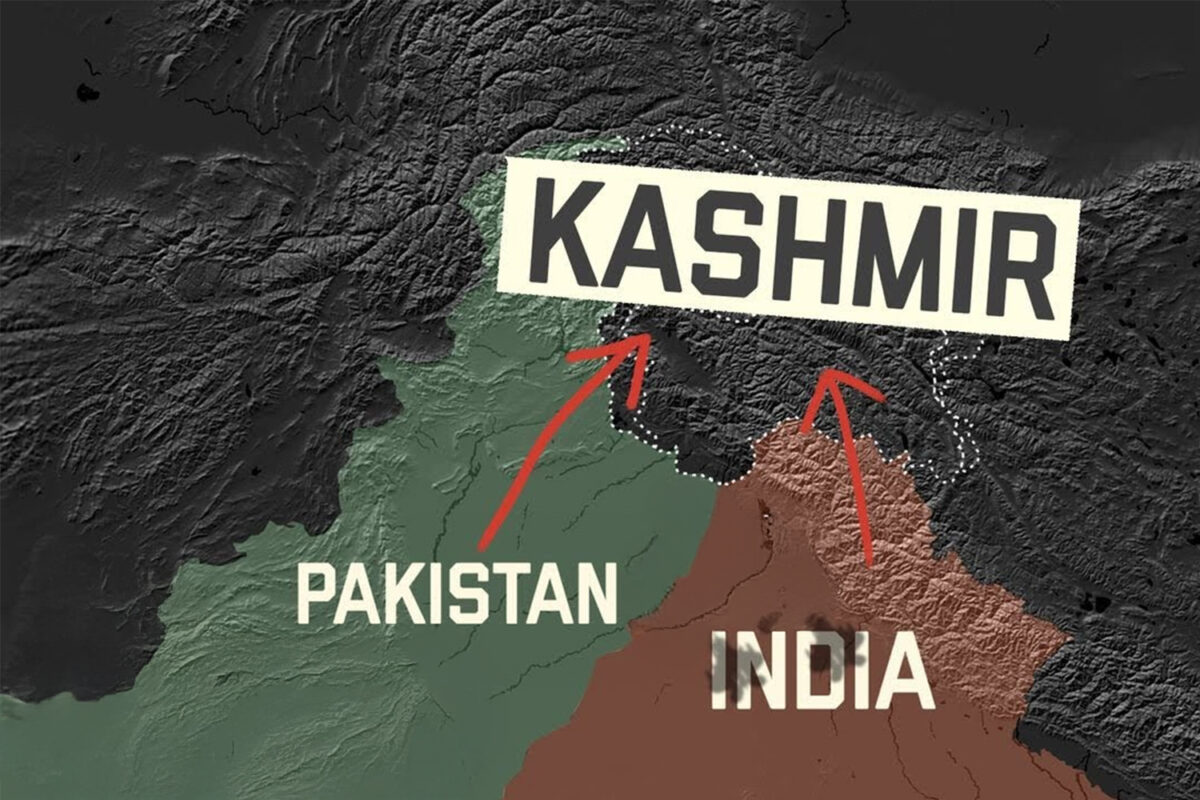Pakistan’s Prime Minister, Imran Khan’s recent interview with America’s HBO has caused quite a stir. Khan said: “Pakistan’s nuclear arsenal is simply a deterrent, to protect ourselves. As far as I know, it’s not an offensive thing. Any country which has a neighbour seven times its size would be worried… The moment there is a settlement on Kashmir, the two neighbours would live as civilised people. We will not need to have nuclear deterrents.”[1] Imran Khan made similar comments back in July 2019 where he said that nuclear war was not an option and Pakistan would surrender her nuclear weapons provided India did the same.[2] Imran Khan is bargaining Pakistan’s nuclear weapons programme despite the fact that it provides the South Asian nation with a fail-safe in the face of a quantitative larger neighbour and other more powerful nations that have designs on the country and the region.
Pakistan’s relationship with nuclear research began in 1954 when the US supplied research reactors to over 40 countries in the Atoms for Peace programme. For the US this allowed it to control the spread of nuclear research and have oversight of other nations pursuing nuclear energy. Under the agreement with the US, she would supply a research reactor to Pakistan and help with the design, construction and operation of power reactors. The Pakistan Atomic Energy Commission (PAEC) was established in 1956 to manage Pakistan’s nuclear research.
The defeat of Pakistan and subsequent dismemberment of East Pakistan in 1971 and India’s nuclear tests in 1974 resulted in Pakistan pursuing a nuclear device. President Zulfikar Ali Bhutto famously explained: “If India makes an atom bomb, then even if we have to feed on grass and leaves—or even if we have to starve—we shall also produce an atom bomb as we would be left with no other alternative. The answer to an atom bomb can only be an atom bomb.” The PAEC initially attempted to use plutonium to develop a nuclear device using material from the Karachi Nuclear Power Plant (KANUPP), but its progress was slow and inefficient and was not going to meet the short timeline Bhutto envisaged. It was here at the end of 1975 Bhutto turned to Abdul Qadeer Khan in Europe.
The statements of Pakistan Prime Minister Imran Khan of giving up Pakistan’s nuclear weapons really shows his lack of understanding of the politics of nuclear weapons
Abdul Qadeer Khan, (AQ Khan) a metallurgist who is considered the “Father of Pakistan’s Nuclear programme” worked at the Dutch Urenco Uranium enrichment plant. He brought centrifuge designs and his nuclear network back with him to Pakistan and Bhutto provided the finance for a uranium enrichment programme. AQ Khan was subsequently given a greenfield site to build his operations with support from the Army and a group of top scientists who had been educated and trained in the West. Over the coming years Khan sourced material from Europe to build his nuclear facility and enrich uranium. Pakistan also received assistance from other states, especially China, who from the late 1970s provided Pakistan with various levels of nuclear and missile-related assistance, including centrifuge equipment, warhead designs, highly enriched uranium (HEU), components of various missile systems, and technical expertise.[3]
In May 1998, India conducted five nuclear explosions, after which Pakistan felt pressured to respond in kind. Prime Minister Nawaz Sharif ordered nuclear tests and five detonated explosions took place on 28 May and a sixth on 30 May 1998. These were low yield detonations and indicated that Pakistan’s nuclear programme was not as advanced as many believed. None of the tests went thermonuclear, as opposed to India’s thermonuclear approach. What was tested was a number of neutron bombs that are a battlefield weapon that is essentially a low yield device.

Modernising the Nuclear Programme
Since 1998 Pakistan has been rapidly developing and expanding her nuclear arsenal. Pakistan is moving from an arsenal of weapons based wholly on HEU to greater reliance on lighter and more compact plutonium-based weapons. The shift to plutonium-based weapons was made possible by a rapid expansion in plutonium production capacity, with two production reactors under construction to add to the two reactors that are currently operating.
Pakistan currently does not have a triad of air, land and sea delivery systems. The main delivery platform of Pakistan’s nuclear device is missiles. Pakistan has a number of short-range, medium, and longer range, road-mobile ballistic and surface-to-surface missiles (SSMs) and both liquid and solid-fuelled missiles. Pakistan possesses a wide variety of nuclear-capable medium range ballistic missiles with ranges up to 1750 miles and nuclear-tipped Babur cruise missiles with ranges up to 430 miles. Pakistan is also believed to be developing tactical nuclear weapons for use on the battlefield with ranges up to 40 miles such as the Nasr missile. According to some reports Pakistan is developing her own equivalent to the Davy Crockett launcher with a miniaturised warhead that may be similar to the W54 – a tactical nuclear weapon developed by the US.[4] These land-based missiles are controlled by Army Strategic Forces Command of Pakistan’s Army.
The Pakistan Airforce (PAF) has two dedicated units operating 18 aircraft in each squadron (36 aircraft total) of the JF-17 Thunder, believed to be the preferred vehicle for delivering nuclear weapons. These units are a major part of the Air Force Strategic Command, the command responsible for nuclear response. The PAF also operates a fleet of F-16 fighters, of which 18 are believed to be capable of carrying nuclear weapons.
Pakistan has attempted to develop a sea-based variant of the Hatf VII Babur, which is a nuclear-capable ground-launched cruise missile. In 2017, Pakistan conducted a successful launch of the Babur III missile from an underwater mobile platform. In response to INS Arihant, India’s first nuclear submarine, the Pakistan Navy pushed forward a proposal to build her own nuclear submarine as a direct response to the Indian nuclear submarine programme.
The American Frenemy
The US has been with Pakistan on this nuclear journey right from the beginning. It provided the country with her first reactor and saw the development of nuclear energy as a way to balance the much larger India. The AQ Khan network was well known by the US but she did not move against Pakistan’s programme. Pakistan has built her own nuclear programme, and didn’t receive much help from the US on her evolution, aside from the original research reactor. Pakistan with clandestine support from countries such as China and was able to build her own reactors. But as the US needed Pakistan during the Cold War she saw the utility of Pakistan having nuclear weapons as a way to strengthen her ally during the Cold War.
There was considerable pressure upon the government of Zulfiqar Ali Bhutto by US officials who even moved against Pakistan’s nuclear programme by cancelling sales of nuclear material, but this was due to many US officials having an antagonistic relationship with Bhutto who used his left credentials and anti-US rhetoric for populist purposes. This turned many US officials against him who applied pressure on the nuclear programme in order to weaken Bhutto. Once General Zia overthrew Bhutto in a coup in 1977, pressure was eased as Pakistan was crucial for the war in Afghanistan against the Soviet Union.
By the late 1990s the number of countries that were attempting to develop nuclear weapons was increasing, although many had not succeeded or abandoned their programmes, countries such as Belarus, Kazakhstan, Ukraine, South Africa, Argentina, Brazil, South Korea, Taiwan, Iraq, Syria, Libya and North Korea all attempted with varying degrees of success to build nuclear weapons. The US throughout the 1990 worked to get all the nations of the world to sign up to the Comprehensive Test Ban Treaty (CTBT) and Pakistan got caught up in this endeavour. With the Cold war over US support for its network of Anti-communist nations was also changing. The US worked to strengthen the treaty and restrict proliferation despite supporting Pakistan’s nuclear ambitions throughout the Cold War.
The US throughout the 1990 worked to get all the nations of the world to sign up to the Comprehensive Test Ban Treaty (CTBT) and Pakistan got caught up in this endeavour. With the Cold war over US support for its network of Anti-communist nations was also changing
Debunking the Myths of Nuclear Terrorism
Ever since the end of the Cold War and especially since the events of 9/11 there have been endless assertions regarding nuclear warfare. Successive US administrations have lambasted Pakistan for spreading nuclear secrets and with the number of attacks on its bases with nuclear weapons terrorists could steal a nuclear bomb.
This Hollywood movie scenario of a terrorist group stealing a nuclear bomb from a secure facility and then somehow weaponising it is virtually impossible. Aside from setting off numerous alarms and protocols it would leave little opportunity to smuggle a bomb very far. If one was stolen, modern nuclear weapons are designed with numerous highly classified safety features, rendering them useless.
The reality of actually attempting to steal a nuclear weapon would require a huge dedication of resources and an immense intelligence effort beyond the reach of almost any terrorist organisation. Terrorist organisations are not governments that have the ability to collect taxes and fund a military–industrial programme. The odds of failure are high, no matter how careful and meticulous the planning. Whilst nuclear weapons facilities around the world are not as hardened as each other, but taken as a whole, they are some of the hardest targets on the planet, and the personnel vetted more than almost any other institution.
Some have advocated that rogue leaders could possibly hand over a nuclear device to a terrorist group. Pakistan has also been under the microscope as many in the West consider rogue elements within Pakistan’s ISI and the army. Elements within such nations could place a nuclear device into the hands of terrorists in order to fulfil their national aims.
A nuclear device is the product of an immense, expensive national effort. Each individual weapon represents an enormous investment of national resources. By handing one over to an outside group, the country not only has no assurance of it being employed in the way they want, but opens herself to the prospect of that immense investment being wasted or misused. Because a meaningful nuclear deterrent rests on not one weapon, but many, the incentive will be for the country to consolidate her stockpile and deploy it to multiple locations that it has strong control over, in order to work towards establishing that deterrent, rather than giving it away.
Bargaining with National Assets
The statements of Pakistan Prime Minister Imran Khan of giving up Pakistan’s nuclear weapons really shows his lack of understanding of the politics of nuclear weapons and doctrine and the role they play in modern warfare. Bargaining with such assets is a recipe for disaster and shows a lack of foresight.
If Pakistan and India peacefully resolve the Kashmir issues and agree on iron clad security guarantees, that include no future wars, there is very little incentive for India to deactivate her nuclear arsenal. This is because India’s nuclear strategy is not Pakistan centric. The original impetus for India to acquire nuclear weapons was to neutralise the conventional superiority of China’s military and to stop China from employing her nuclear weapons against India.
Imran Khan’s awareness of nuclear strategy is based upon him giving up Pakistan’s nuclear weapons if India did the same. This would leave Pakistan vulnerable to other conventional and nuclear threats: the US has no permanent allies, Israel has always looked upon Pakistan’s nuclear programme with fear and Russia and China both have interests within and around South Asia. Pakistan’s conventional military strength is not enough to deter these powers from invading or teaming up with a disarmed nuclear India to dismember the country. Pakistan’s nuclear arsenal is both a deterrent and a force multiplier should war break out.
The lessons learned from North Korea’s nuclear standoff with America is that nuclear weapons discourage invasions. Where the absence of nuclear weapons—in countries such as Iraq, Syria and Libya—encourages nuclear powers to invade with impunity. Imran Khan has failed to appreciate the politics of nuclear strategy.
[1] Prime Minister Imran Khan’s Complete Interview on HBO Max with Jonathan Swan – YouTube
[2] Pakistan would give up nuclear weapons if India did: Imran Khan – News | Khaleej Times
[3] T.V. Paul, Chinese-Pakistani Nuclear/Missile Ties and the Balance of Power,” The Nonproliferation Review, 2003.




